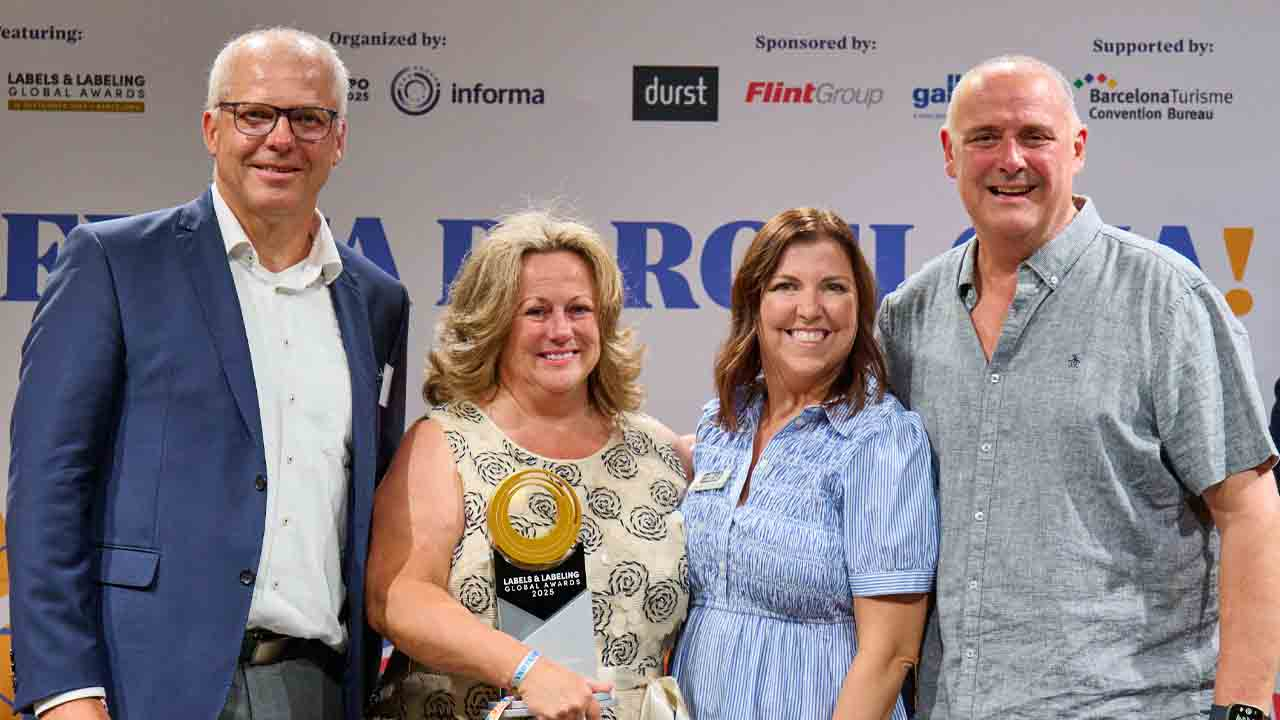Older and wiser

With age, it is said, comes wisdom. And while that might not always hold true for individuals, a look at the evolution of pressure-sensitive labels over the last 40 years reveals an industry that has grown smarter by any measure.
Consider what our industry has done with materials. We’ve been able to manipulate adhesive, paper and film to perform in a wider array of increasingly specific contexts, on increasingly challenging substrates, for increasingly particular applications. Today we have more labels than ever that can do interesting and useful things in conditions that are often less than optimal.
On the purely decorative side of the spectrum, the rise of the global middle class has fueled exponential growth in consumer goods and the need for better branding and greater shelf appeal so products can stand apart from the pack The result? Materials that serve as a canvas for rich, creative, and distinctive package decoration, with shapes, colors and textures that designers in 1978 could only dream of.
But today’s labels are more than just a pretty face. They also add value by improving safety, traceability, packaging functionality and more. They are more integral to packages, products and consumer experiences than ever. And all of this has been made possible by the ever-expanding ability of converters and materials developers alike to coax new capabilities out of the basic components of adhesive, facestock and liner
In the 1980s, we saw the emergence of film labels, which enabled a whole universe of new applications. In the 1990s, multilayered PS adhesives created new capabilities, such as reclosability, and the first-ultra-clear water-whiting-resistant adhesive for beer and beverage labels was introduced. The 2000s saw adhesives that enabled unprecedented run speeds, topcoating that enabled greater printability and faster converting, and MDO labels made with ultra-thin facestock and liners to allow for more labels per roll and less resource consumption. These are just some of the milestones our industry has achieved.
Innovations
Hand-in-hand with materials innovations have been advances in process engineering, and in our industry’s understanding of how one informs and improves the other. We have continually improved manufacturing to increase efficiencies, lower costs, raise the levels and consistency of quality, and reduce resource consumption. Four decades ago, coating speeds averaged a few hundred meters per minute; now, a thousand meters per minute is standard. Remarkably, the quality we can produce at those speeds is better and more consistent than ever, and coat weights have significantly reduced.
The least foreseen development of the last forty years might be the greatest evidence of our industry’s collective wisdom: our move toward sustainability.
Pulled by our recognition that we must do business within the limits of the planet’s natural resources, and pushed by the demands of brands and consumers that increasingly prioritize sustainability, the label industry has, over the last decade or so, taken greater care to ensure that its operations and products are good for people and the environment. Lightweighting, use of recycled materials, responsible sourcing, greenhouse gas reduction, and even the beginnings of an overdue, industry-wide move toward recycling liner and matrix waste – these are just some of the steps label-makers have taken in acknowledging that growth in the 21st century means doing more with less.
So after looking back, where will the accrued wisdom of the last 40 years take us?
No doubt, sustainability will be an increasingly important factor, shaping everything from materials to decoration technologies to transport. Printing technologies – especially digital – will continue to influence the industry as well.
And as the Internet of Things becomes a reality, and as brands and retailers catch up with consumers who are shopping across multiple channels spanning both physical stores and online outlets, we’ll see labels that integrate the physical with the digital and connect everyday objects to consumers and to one another. This is already happening with deployment of RFID labels in the apparel segment, and adoption in other segments is close behind.
Avery Dennison has been proud to introduce many of labeling’s landmark innovations over the last four decades. But we’re prouder still to be part of industry that values invention, integrity and the wisdom that comes with experience. The future of labeling will not be shaped by one or two companies, but by our rich, global community of converters, suppliers and others. Our industry’s expertise and our collaborative spirit will continue to shape labeling – and innovations we can now only dream of in 2018 – for the next forty years. It might be the greatest wisdom of all to acknowledge that change is constant, the path forward is rarely predictable, and the greatest things we can accomplish together are yet to come.
Stay up to date
Subscribe to the free Label News newsletter and receive the latest content every week. We'll never share your email address.

